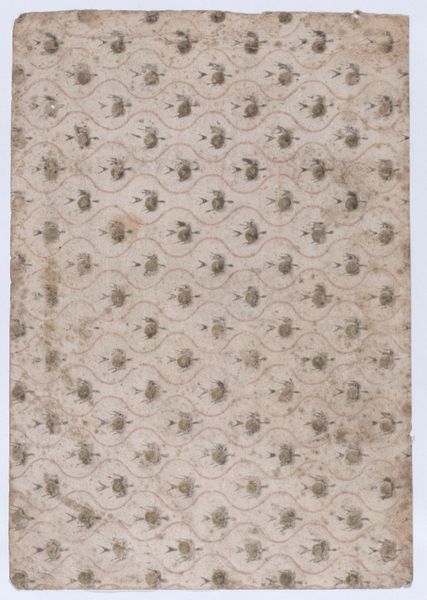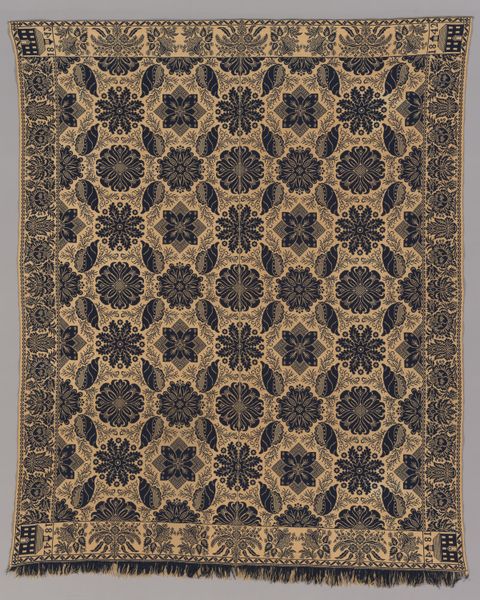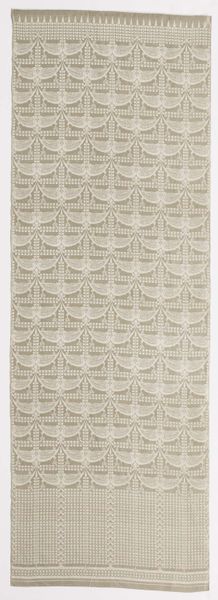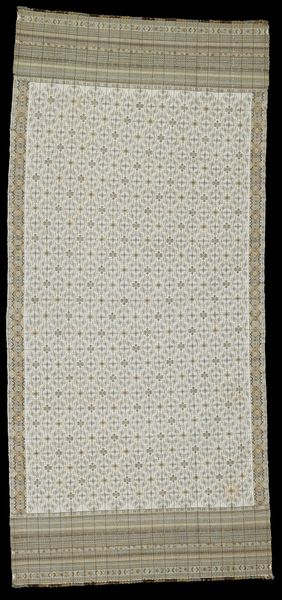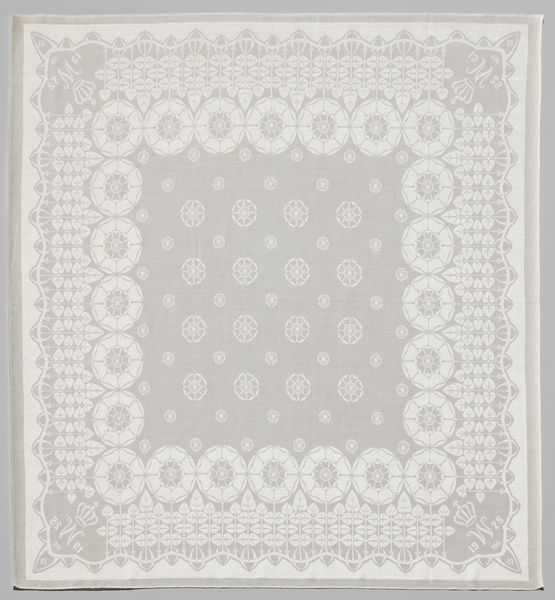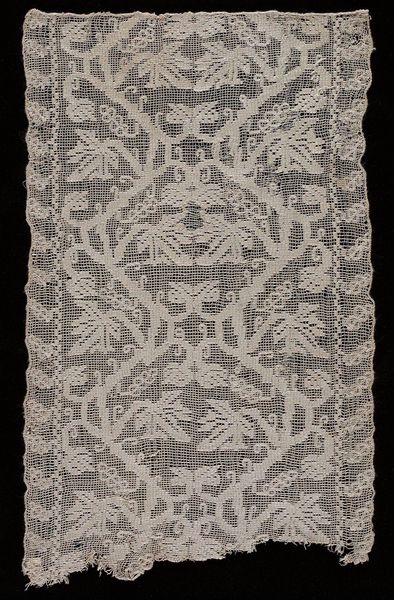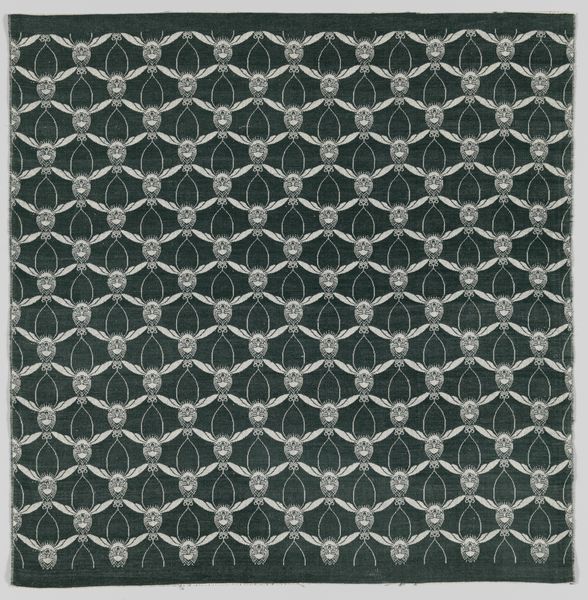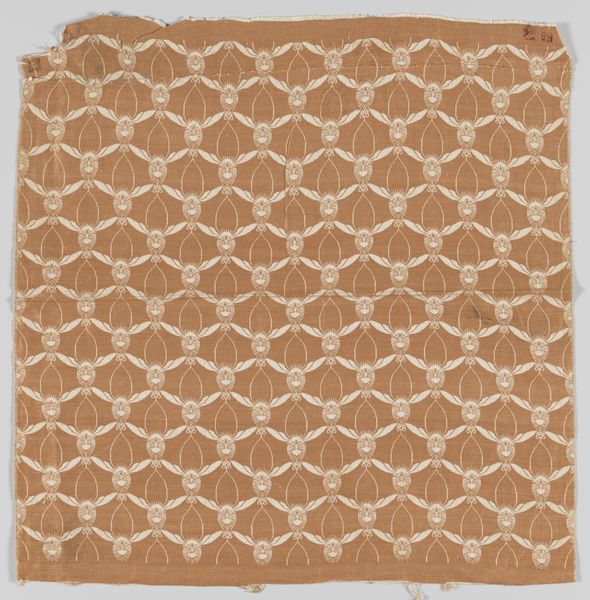
silk, weaving, textile
#
silk
#
weaving
#
textile
#
geometric pattern
#
geometric
#
islamic-art
Dimensions: 70 x 47 3/4in. (177.8 x 121.3cm)
Copyright: Public Domain
Curator: Take a look at this “Panel”, an intriguing silk weaving dating back to around the 17th century. The artist is unknown, yet their craftsmanship shines through. Editor: Wow. It's mesmerizing. The repetitive geometric pattern kind of dances before your eyes. Makes you wonder if it was intentional, to almost hypnotize. Curator: Islamic art often uses geometric patterns. They are not merely decorative but represent a deep understanding of order and harmony, pointing toward the infinite nature of God. It is the continuous reflection of something more, without replicating figures directly, such as living things. Editor: Right. It feels somehow very meditative, like looking at fractals or the way water ripples when you drop something in. But, the light blue and gold gives it such a calming effect, maybe too much? Does the evenness lose something, do you think? Curator: Well, balance is key, isn’t it? These colors certainly evoke serenity. Blue representing the heavens, wisdom, while gold signifies enlightenment, knowledge. This harmony resonates through generations, reminding us of the interwoven connection between earthly and divine existence. We feel grounded, connected through pattern. Editor: Maybe it *is* mesmerizing. Knowing those historical resonances adds another layer. I was thinking earlier, does that regularity, in this kind of art, have anything to do with trying to define meaning by creating echoes of the structure and scale of the known world, as we grasp it. Does repetition offer control? Curator: Control is part of it. In a spiritual practice or meditation, isn’t a repeated incantation offering a sense of control? Similarly, here, the repeated forms speak to this eternal aspect, using the earthly form to signal a higher meaning, while containing us in a visual mantra. The continuous forms create connection, and give visual definition to eternity, almost. Editor: That's a powerful way to see it. And given the precision of the weaving, the craft alone almost feels devotional, doesn’t it? You can see someone investing their heart, mind, body into creating these repetitions in silk. Curator: Absolutely. To consider what we inherit, culturally, the skills, memories and beliefs expressed in woven form. So much intention poured in. Editor: There's something very humbling about seeing this anonymous artist's commitment across centuries, a beautiful, almost reverent devotion.
Comments
minneapolisinstituteofart almost 2 years ago
⋮
Although woven and embroidered in Christian Spain, this wall hanging exhibits a strong Islamic influence. During more than seven centuries of Islamic rule (711-1492), highly skilled Moorish craftsmen formed the basis of textile production throughout the Iberian peninsula, which endured long after their expulsion. Islamic ornamentation is commonly characterized by repetitive geometric patterns, in which stylized plant and animal motifs are evenly distributed over the entire surface. Here, symmetric bands of rosettes frame the field of rampant griffins. The griffin is a legendary creature, usually represented in literature and art as having the head, wings and claw of an eagle, and the body and legs of a lion. It seems to be Mid-Eastern in origin, as it is found in the art of the ancient Babylonians, Assyrians and Persians. In early Christian times, griffins appeared in bestiaries (moralistic animal allegories) and frequently served as gargoyles in Gothic architecture. The griffin is also a common device in heraldry, where it symbolizes the combined qualities of the eagle and the lion -- vigilance and courage.
Join the conversation
Join millions of artists and users on Artera today and experience the ultimate creative platform.
